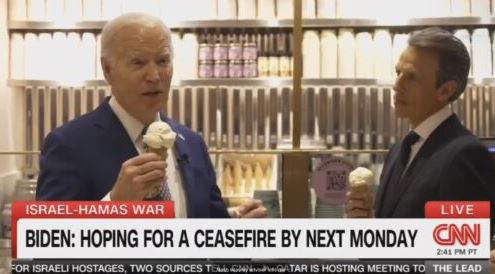President Biden’s Ice Cream Moment Sparks Controversy Amid Ceasefire Discussions

President Joe Biden found himself at the center of a heated debate following a recent public appearance where he was seen holding an ice cream cone while responding to a question about an international ceasefire deal. The image quickly circulated, drawing criticism from some quarters who viewed the casual demeanor as undermining the gravity of the topic at hand.
Critics argue that the optics of enjoying ice cream while discussing matters of national and international importance could be perceived as insensitive or dismissive of the seriousness of the issues. This moment has reignited discussions about the balance of personal and professional conduct for public figures, especially in contexts requiring solemnity and diplomacy.
Supporters of Biden, however, defend the President, highlighting his track record of engaging with the public in relatable ways. They point out that informal moments do not necessarily detract from the seriousness with which he approaches his duties. Instead, they argue, such instances humanize the President, demonstrating his ability to connect with everyday experiences while handling the complexities of governance.
The incident has spurred a broader conversation about the expectations placed on leaders in the digital age, where moments are captured and scrutinized instantaneously. The debate touches on issues of decorum, media portrayal, and the challenges of maintaining a balance between personal authenticity and the dignified representation of one’s office.
As discussions continue, this episode serves as a reminder of the constant public and media attention faced by political figures and the impact of seemingly minor actions on public perception. It underscores the nuanced considerations leaders must navigate in their public appearances and communications, especially when addressing sensitive topics.
The conversation around President Biden’s ice cream moment reflects the diverse expectations of presidential conduct in contemporary society. It highlights the ongoing dialogue about the role of leaders in embodying both the gravity of their positions and the relatability that connects them to the public.





